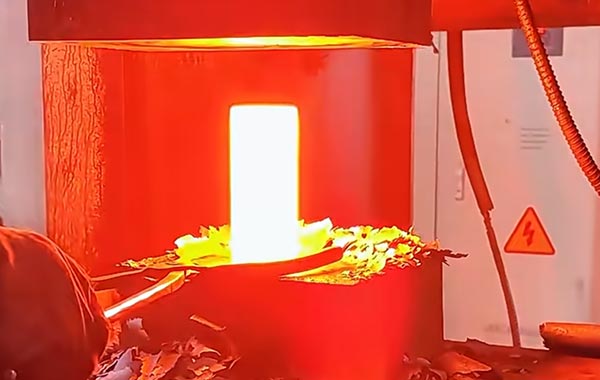Forging processes can be classified into hot forging, warm forging, and cold forging, depending on the temperature at which the material is deformed. Among them, hot forging and cold forging are the most commonly used techniques. These two processes differ significantly in terms of forming mechanisms, technical characteristics, and areas of application.
1. Process Principles and Characteristics
Hot forging involves heating the metal above its recrystallization temperature (typically above 1100°C), allowing the material to undergo plastic deformation in a high-plasticity state. This significantly reduces the material’s deformation resistance, making hot forging suitable for components with large deformation or complex geometries. The advantages of hot forging include dense internal structure and high forming efficiency; however, it generally results in lower dimensional accuracy, rougher surface finish, and is prone to oxidation and decarburization.
Cold forging is performed at room temperature, where the metal is plastically deformed under pressure without prior heating. Cold-forged parts typically exhibit high dimensional accuracy and excellent surface finish. The process also induces work hardening, which improves mechanical strength. However, cold forging requires materials with good ductility, involves higher forming forces, imposes stringent demands on tooling, and is limited in forming complexity.
2. Suitable Materials and Products
Hot forging is applicable to a wide range of ferrous and non-ferrous metals, particularly carbon steels, alloy steels, and superalloys with poor forgeability. It is commonly used to produce large and heavy-duty components such as shafts, wheels, and gear rings.
Cold forging is best suited for ductile materials such as low-carbon steel, aluminum alloys, and copper. It is widely used for the mass production of small- to medium-sized precision components, including bolts, gears, and bearing rings.
3. Process Selection Considerations
The choice between hot and cold forging depends on several factors, including material properties, part geometry, dimensional tolerances, and production volume. Hot forging is preferable for complex shapes or large deformations, while cold forging offers better cost-efficiency and process stability for high-volume production of precision parts.
Hot and cold forging each have distinct characteristics and complementary application scopes. In practice, the optimal forging process should be selected based on the specific technical requirements of the component to achieve the best balance between quality and efficiency.


